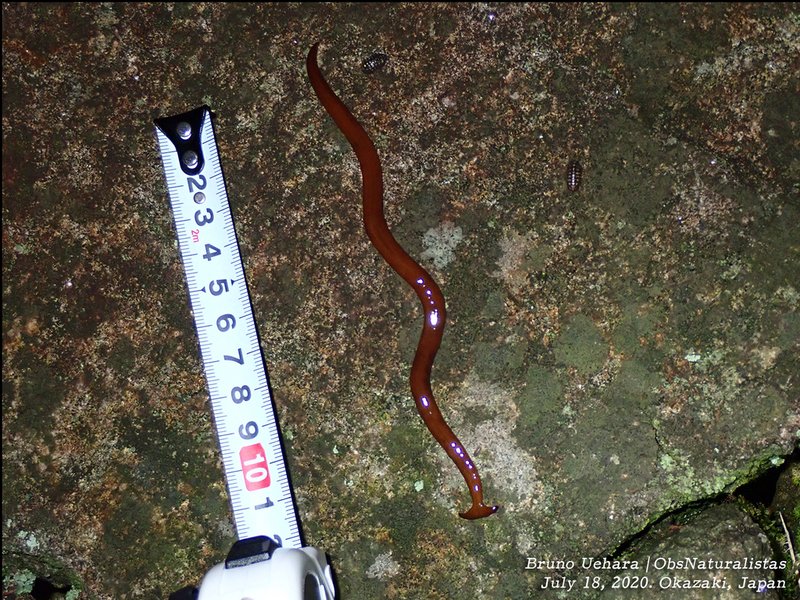
The **hammerhead worm**, or *Bipalium*, has sparked interest not just for its unusual appearance but also for its surprisingly complex behaviors and habitats. With warming temperatures and shifting rainfall patterns, these worms’ ranges are changing, leading to new behaviors and adaptations. If you’re curious about how climate influences where these creatures thrive, you’re in for an insightful journey into the intersection of nature and environmental science.
What Are Hammerhead Worms?
Hammerhead worms are a type of flatworm, primarily found in tropical and subtropical regions. They can range from a few inches to over a foot long, depending on the species, and they possess a unique hammer-like head that sets them apart from other worms. This distinctive feature helps them navigate their environment, almost like a key fitting into a specific lock.
These worms are mostly terrestrial and often found in moist environments like leaf litter or tropical forests. They are carnivorous, preying mainly on other small invertebrates, which makes them an intriguing part of their ecosystem. Here’s an interesting tidbit: some species of hammerhead worms have a regenerative ability, allowing them to grow back lost sections. Think about that for a moment—losing a chunk of your body and simply growing it back!
The Role of Climate in Hammerhead Worm Distribution
Climate plays a significant role in where hammerhead worms can thrive. Just like how a plant needs specific conditions to grow, hammerhead worms have their own preferences. They favor humid, warm environments, and as temperatures rise or fall, these conditions can shift dramatically.
When the climate is warm and wet, hammerhead worms can spread into new areas, expanding their range. Conversely, cooler temperatures or prolonged dry spells can limit their habitats. For example, in areas that have experienced deforestation or urban development, the natural moisture levels can drop, influencing where these worms can live. It’s like trying to find your favorite coffee shop in a city that keeps changing; if you can’t find the right spot, you might just pack up and go elsewhere!
Temperature Trends and Their Impact
One of the most direct ways climate affects hammerhead worms is through temperature changes. These worms thrive in warmer climates, which makes temperature fluctuation particularly impactful. Research has shown that as global temperatures continue to rise—thanks to climate change—hammerhead worms have been observed colonizing different regions.
In areas where temperatures have increased, it’s not unusual to see a greater presence of hammerhead worms. They are like the enthusiastic party guests who arrive early for the celebration. However, what happens when it gets too hot? Certain species might struggle to survive in extreme heat, which can lead to a decrease in their populations. It’s a delicate balance; too much warmth can be just as harmful as cold.
Moisture Levels and Habitat Changes
Just like humans need water to stay hydrated, hammerhead worms require moisture in their environments to survive. They depend on humid conditions to keep their bodies from drying out. Climate change affects rainfall patterns, which can lead to uneven moisture distribution across regions.
For example, in some areas, heavy rains might flood habitats, making it hard for hammerhead worms to find suitable living conditions. On the other hand, if a region experiences drought, the lack of moisture can force these worms to migrate to more favorable environments. Think of it like a game of musical chairs; when the music stops, they have to find a new place to sit—or in this case, live.
The Impact of Habitat Loss
Climate change is not the only threat to hammerhead worms; habitat loss from human activities like urbanization and agriculture also plays a significant role. As forests are cleared and land is developed, the natural habitats of these worms are diminished. This loss can lead to decreased populations and less genetic diversity, making it harder for them to adapt to changing conditions.
When their natural environments are disturbed, hammerhead worms may struggle to find food sources and maintain their populations. This can create a ripple effect within their ecosystems, impacting not just the worms but also the species that rely on them for food or other ecological functions. It’s a reminder of how interconnected everything in nature truly is.
The Future of Hammerhead Worms
So, what does the future hold for hammerhead worms in the face of climate change? Honestly, it’s a bit uncertain. As temperatures continue to fluctuate and habitats change, we might see shifts in their populations and distributions. Some species may adapt well to new environments, while others may struggle to survive.
Conservation efforts play a vital role in ensuring these unique creatures can thrive. Protecting their natural habitats and creating sustainable environments can help hammerhead worms maintain their ranges. It’s like giving them a lifeline in a world that keeps changing.
In conclusion, climate has a profound influence on hammerhead worm ranges, impacting where they live and how they thrive. By understanding these factors, we can appreciate not just the beauty of these creatures but also the intricate web of life they are a part of. As we continue to explore our planet’s ecosystems, let’s remember the small and unique beings that share our world and the challenges they face.

